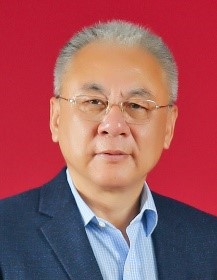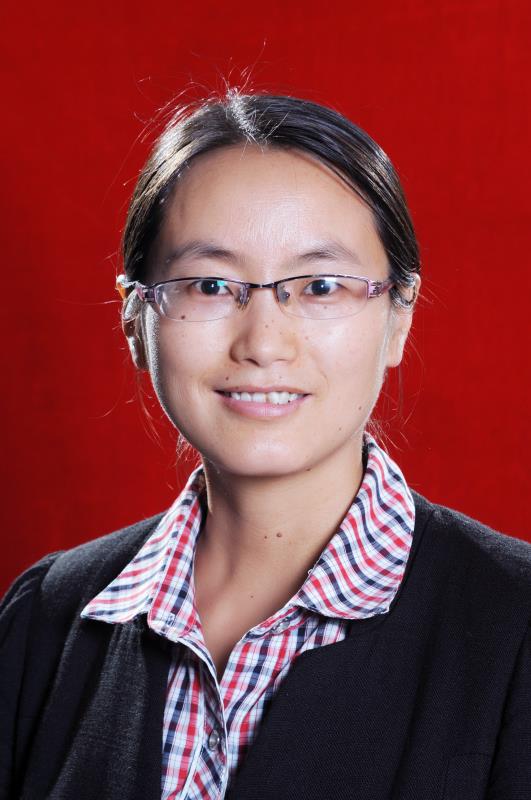

Prof. Antonio Caggiano, Darmstadt University of Technology/CONICET and University of Buenos Aires, Germany and Argentina
Title: Micro-to-meso scale research of eNeRGy-FOAM PCM cement-based composites for green buildings
Abstract: Climate change and environmental degradation due to greenhouse gas emissions and air-pollution needs ambitious policies and close international cooperation and partnerships to make our world climate-neutral. In this sense, porous cementitious composites capable to storage and release huge amount of energy storages could be employed as novel breakthrough insulation and/or energy regulating systems that will replace available materials with a multi-functional energy-storing/-saving skills. Storing thermal-energy in cementitious-composites (i.e., solar and/or environmental heat/cooling) in components of residential or non-residential buildings is a promising way to passively level-out the daily temperature differences, and thus to significantly reduce (cut-back) energy demands/consumptions.
In this context, this keynote lecture has the main aim of sharing the recent developments and future trends on experimental research and numerical tools dealing with the integration of PCM in highly porous systems for thermal energy storage in the construction and building sector. Particularly, a wide range of research outputs on Nano-modified Highly Porous PCM Cementitious Composites and related numerical research by employing micro-to-meso scale approaches, which are contributing to enhance energy-efficient and sustainable materials to be used for residential and non-residential buildings, will be disseminated.

Prof. Jonathan Adams, Nanjing University, China
Title: Changes in marine plastic biofilms under ocean acidification
Abstract: With increasing plastic pollution, the biofilm community on marine plastic debris is becoming increasingly important, but its responses to global changes such as ocean acidification are unknown. We compared the whole metagenome of biofilms on plastic drinking bottles kept in subtidal waters naturally enriched in CO2, and for comparison normal ambient CO2 levels, off the southern coast of Japan. Metagenomics allowed the full range of taxa and functional genes to be compared. Analysis showed a biofilm community incorporating a broad range of the diversity of life, including eukaryotes and archaea, and that ocean acidification affected all groups. The most striking overall difference was a large increase in the proportion of eukaryotes with increasing acidification. There was a major increase in diatom relative abundance, but a decrease in their diversity, while cyanobacteria stayed at similar relative abundance. Decreased prevalence of genes associated with cell-cell interactions also suggested weaker biofilm integration and resilience. There was an increase in heat shock, oxidative and osmotic stress genes with acidification, suggesting decreased resilience of the biofilm community, but an increase in genes associated with detoxification and aromatic compound breakdown suggesting increased ability to degrade xenobiotic pollutants. However, antibiotic resistance genes decreased overall. There were few major nitrogen and cycling gene changes, apart from decreased abundance of ammonification genes, suggesting that the role in nutrient processes of plastics in an acidified ocean may not change much. However, there is a trend of decrease in abundance in iron acquisition genes suggesting decreased sequestering of this nutrient.
The snapshot provided by this experiment suggests that as the world’s oceans acidify, the plastisphere will undergo significant changes with changes in taxonomic composition towards a greater role for diatoms, and changes in xenobiotic degradation and nutrient cycling that could have wider implications for ocean ecology.

Prof. Baoyu Gao, Shandong University, China
Title: Application of Forward Osmosis technology in the desalination of brackish water and the advanced treatment of municipal reclaimed water
Abstract: As an environmental-friendly membrane technology with low energy needed, low fouling propensity and high recovery rate, forward osmosis (FO) can be widely applied to a range of fields concerning industry and people’s daily life, such as, seawater desalination, power generation, industrial wastewater treatment, aerospace industry and food and pharmaceutical processing. In order to relieve the fresh water and energy crisis of China, it is necessary to investigate the feasibility of application of forward osmosis technology in brackish water desalination and advanced treatment of municipal reclaimed water. In this study, a laboratory-scaled plate-and-frame FO setup with TFC FO membrane was used. Draw solutions(DSs) formed by NH4HCO3 and eight soluble inorganic salts (K2SO4, NaCl, KCl, KNO3, NH4Cl, NH4NO3, Urea and (NH4)2HPO4), respectively and TFC membrane were used to desalinate simulated brackish water (SBW). And three blended solutions (KCl, NH4Cl and (NH4)2HPO4 mixed with NH4HCO3, separately ) were selected as DSs and CTA membrane was used for the treatment of the effluent from WWTP. The basic properties of DSs, pure water flux, reverse draw solute flux, variation of the concentration of N, P, DOC in the feed solution (FS), quantitative analysis for fluorescence excitation-emission matrix fluorescence spectroscopy (EEMs) of dissolved organic matter in FS and the membrane fouling were comprehensively investigated. The main conclusions are as follows:(1) Compared with single salt solution, the characteristics of blended solution were improved a lot. After single salt was mixed with NH4HCO3, the pure water flux of FO process achieved a notable increase; (2) The osmotic pressure driving force of every draw solution was not utilized effectively using both DI water and SBW as FS. For the salts whose PR was less than that of NH4HCO3, blending with NH4HCO3 was beneficial to improve their PR; (3) Blended solution achieved higher pure water flux than corresponding single salt solution in FO process for treating the effluent from WWTP, while its the reverse draw solute flux was also higher than that of single salt solution; (4) As the FS was concentrated in FO process, the concentration of NH3-N, TN and DOC in the concentrated FS increased. (5) Three kinds of fluorescence DOM including aromatic proteinsⅡ, fulvic-like acids and soluble microbial-like products were abundant components of concentrated FS and the effluent from WWTP. Meanwhile, the contents of aromatic proteinsⅠand humic-like acids were less in those samples. Total cumulative fluorescence intensity of concentrated FS was less than initial FS. In concentrated FS, the cumulative fluorescence intensity of region Ⅰ,Ⅱand Ⅲ all decreased, but that of region ⅣandⅤkept steadily; (6) In both brackish water desalination process and the treatment of the effluent from WWTP, membrane fouling all occurred, however, the membrane fouling in that two processes was difference. In desalination of brackish water, the fouling mater only occurred on the support layer, the membrane fouling was caused by the accumulation of draw solutes. Whereas, membrane fouling happened on both sides of membrane. And the fouling on the support layer was similar with that formed in desalination of brackish water, but the fouling on the active layer caused by the inorganic salts like reactive silicate and organic maters in FS.

Prof. Guohua Chang, Lanzhou City University, China
Title: Phytoremediation of phenol by Hydrilla verticillata (L.f.) Royle and associated effects on physiological parameters
Abstract: Phenol contamination is a common occurrence in aquatic environments in different parts of the world and strategies that utilize cheap and eco-friendly phytoremediation technologies are required to overcome problems in this regard. The submersed macrophyte Hydrilla verticillata (L.F.) Royle was exposed to different concentrations of phenol (0–200 mg L−1) to assess its potential in removing the organic compound. H. verticillata efficiently degraded phenol in solutions with initial concentrations lower than 200 mg L−1. The adverse effects of phenol on physiological parameters of H. verticillata such as protein, free amino acids, soluble sugar, ascorbic acid (AsA), peroxidase (POD) and superoxide dismutase (SOD) in plants were also investigated after 7 d of phenol stress. The protein content was gradually reduced with increasing concentrations of phenol. Similar to protein, the content of free amino acids decreased with increasing phenol concentration. Other physiological parameters were found to be significantly influenced by 200 mg L-1 of phenol.
In order to explore the effect of exogenous phenol on the metabolism of H. verticillata during phytoremediation, gas chromatography-mass spectrometry (GC-MS) was used to analyze endogenous soluble organic compounds. The results shown that there were more than 60 compounds in H. verticillata, including 19 non-polar components, mainly for C15-C29 series of n-alkane; 16 kinds of weak polarity fractions, mainly for neophytadiene series; 29 components were detected in polar fractions, mainly for C12-C24 fatty acid compounds series. In the process of phenol degradation, the polar components of H. verticillata changed obviously, compared with the control. Fatty acid composition and carbon number distribution were affected in the plants while unsaturated fatty acid content was significantly lower.
In summary, H. verticillata is a promising candidate for the phytoremediation of the phenol-contaminated aquatic system.